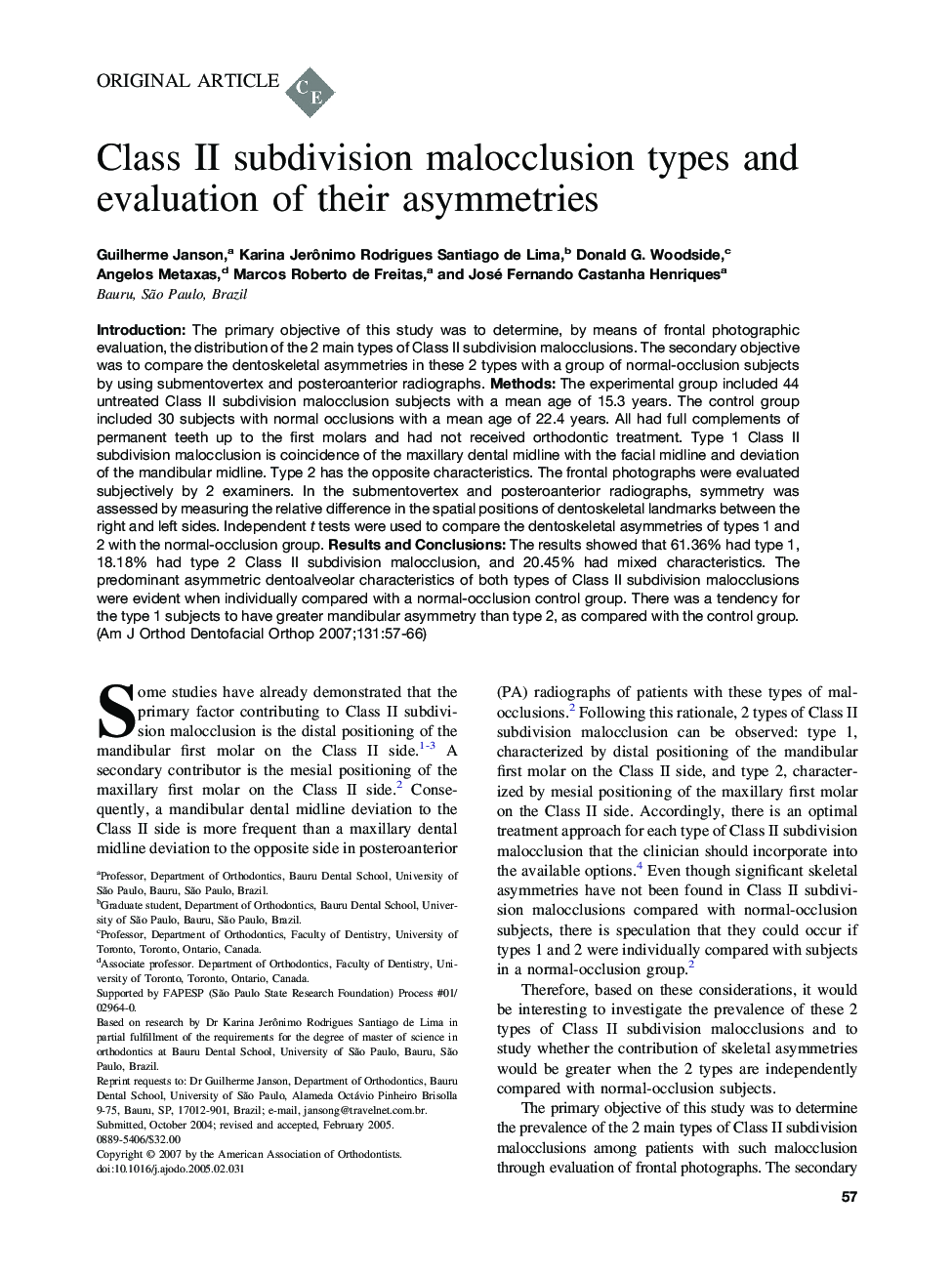| Article ID | Journal | Published Year | Pages | File Type |
|---|---|---|---|---|
| 3120464 | American Journal of Orthodontics and Dentofacial Orthopedics | 2007 | 10 Pages |
Introduction: The primary objective of this study was to determine, by means of frontal photographic evaluation, the distribution of the 2 main types of Class II subdivision malocclusions. The secondary objective was to compare the dentoskeletal asymmetries in these 2 types with a group of normal-occlusion subjects by using submentovertex and posteroanterior radiographs. Methods: The experimental group included 44 untreated Class II subdivision malocclusion subjects with a mean age of 15.3 years. The control group included 30 subjects with normal occlusions with a mean age of 22.4 years. All had full complements of permanent teeth up to the first molars and had not received orthodontic treatment. Type 1 Class II subdivision malocclusion is coincidence of the maxillary dental midline with the facial midline and deviation of the mandibular midline. Type 2 has the opposite characteristics. The frontal photographs were evaluated subjectively by 2 examiners. In the submentovertex and posteroanterior radiographs, symmetry was assessed by measuring the relative difference in the spatial positions of dentoskeletal landmarks between the right and left sides. Independent t tests were used to compare the dentoskeletal asymmetries of types 1 and 2 with the normal-occlusion group. Results and Conclusions: The results showed that 61.36% had type 1, 18.18% had type 2 Class II subdivision malocclusion, and 20.45% had mixed characteristics. The predominant asymmetric dentoalveolar characteristics of both types of Class II subdivision malocclusions were evident when individually compared with a normal-occlusion control group. There was a tendency for the type 1 subjects to have greater mandibular asymmetry than type 2, as compared with the control group.
